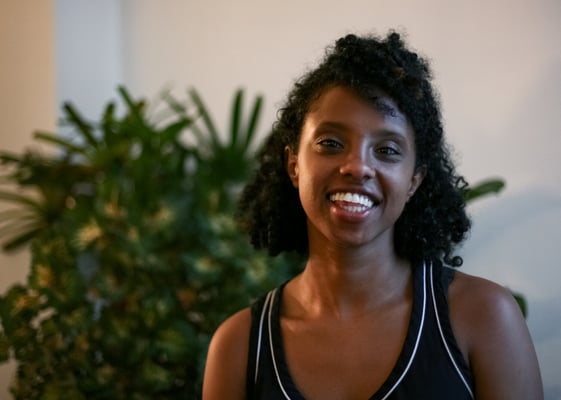Professor Naomi Zewde knows the power of a good op-ed: as a researcher with a focus on economic inequality in wealth and in health insurance, she employs the form as a bridge between her data and the general public—creating a vision for change. But you don’t need to be a notable researcher to write a great op-ed; you just need a point of view! As Professor Zewde says, “Stake a claim and get it across powerfully.”
Read on to get more of her tips to take your Op-Ed Competition entry to the next level!

You’re a professor at the City University of New York’s Graduate School of Public Health and Health Policy, with a focus on economic inequality. What is it about the op-ed that makes it a good avenue for communicating and conveying your research with the public?
People read op-eds! I have almost a double life as an academic, I get into the weeds of details in academic publications. There, my colleagues and I poke at ideas using data and theory and logic but often the article will be too dry and technical for busy people to pour over (since it’s not their day job the way it is mine).
In an op-ed, you get to distill the points of the academic arguments, those points on which scholars agree even if our interpretation is different. For example, we all agree that student loan debt has tripled over the past fifteen years. Whether or not we think it’s time to rethink that whole debt-based setup is where the individual analysis and voice come in.
The op-ed is a good place to add your own color and to deliver that message far and wide.
In your op-eds, you offer a vision forward or tangible solutions to the issues presented. How can young writers utilize the op-ed format as a vehicle for change within their school or community?
You can publish an op-ed anywhere—school paper, local paper, etc. These are all great places to weigh in on what matters to you, your family, your neighborhood, your friends etc. In my view of the world, the thing I feel I want to share, we have it totally within our capability to build something better. We can have better housing, healthcare, education, a better society overall for everyone. So that’s what I tend to write about. The op-ed is going to be placed with a certain audience, whoever it is that reads this magazine/newspaper/blog. It’s your chance to speak to that audience. You don’t have to change yourself or your message, but you want to keep the audience in mind when you write to make sure it makes sense to them and is highly effective.
You recently published an op-ed in The New York Times on how canceling student debt would affect the racial wealth gap. Can you give us insights into the process of publishing an op-ed with a large, national outlet like The New York Times?
I shopped it to several outlets. The New York Times rejected it at first. So did Los Angeles Times (they had something similar), and so did The Washington Post. Then, I slightly changed the topic. First, it was about how student debt in general is holding us all back. Then I came back to The New York Times with a race angle and they took it.
It’s difficult to predict whether a piece will be picked up—even for journalists or others with a track record. It’s far more likely to land with a local publication.
You can also reach out to someone you admire and offer to draft an op-ed and see if they’re interested in submitting along with you. Essentially, offer to do the work and let them sign on.
When you’re starting out, it’s important to build up a portfolio of work, so start with your local paper or blog—you never know where it will lead!
When sitting down to write an op-ed, who are the writers that inspire you most?
My PhD advisor Pamela Farley Short. She was always (and still sometimes when I send her work) telling me to cut the sentences down shorter. It’s easier to follow a short, clear sentence than a long and winding one. Sometimes we have an instinct as writers to make something very flowery. We may find that beautiful as the writer. But prose writing should be clear.
I’m also inspired by the courage of writers like Naomi Klein and Jane Mayer who pull no punches when it comes to speaking the truth as they see it, regardless of who might get mad.
What do you think are the key elements of a winning op-ed?
Prepare:
- bottom line up front (get to the point);
- outline the contents;
- clear paragraphs building the point, each full of clear sentences.
Simplicity is key! Not stupid, just simple. Stake a claim and get it across powerfully.





